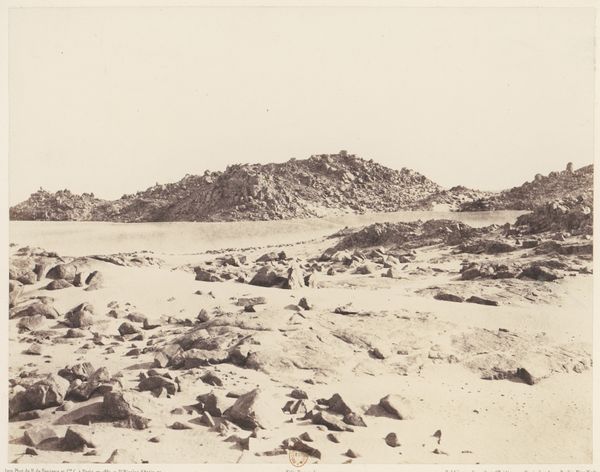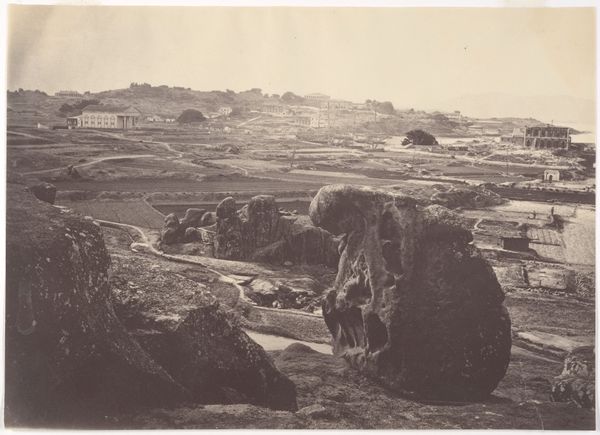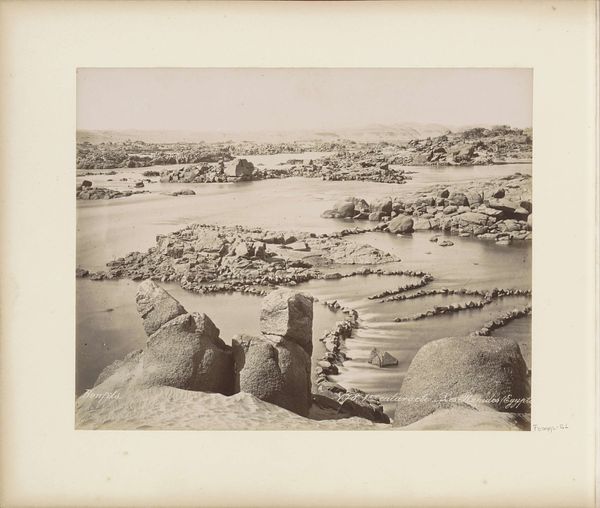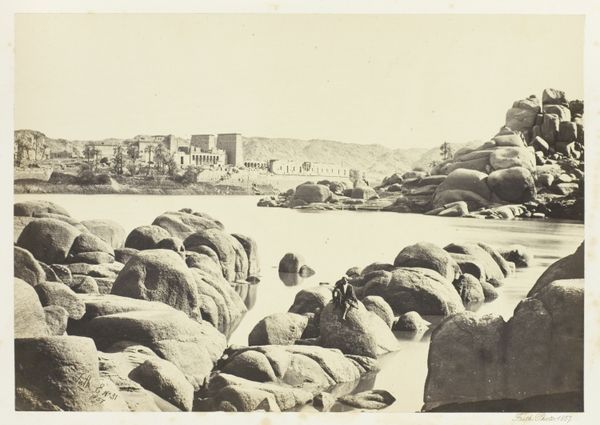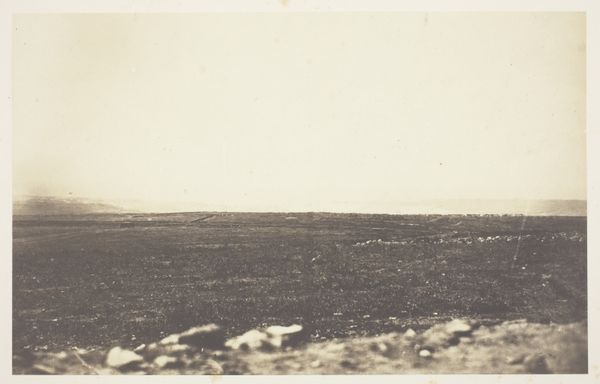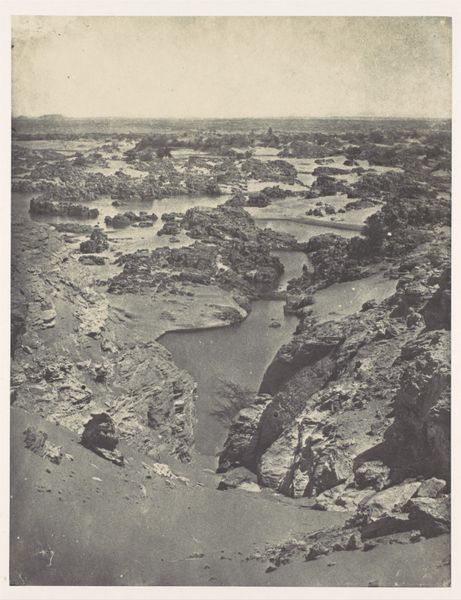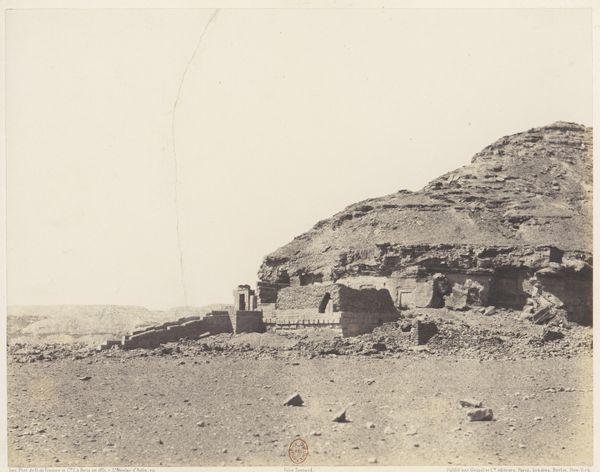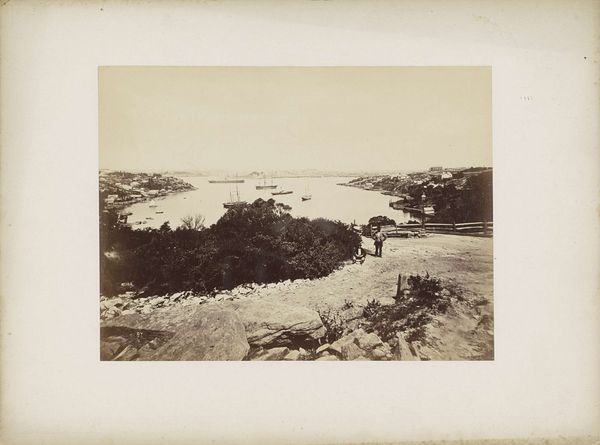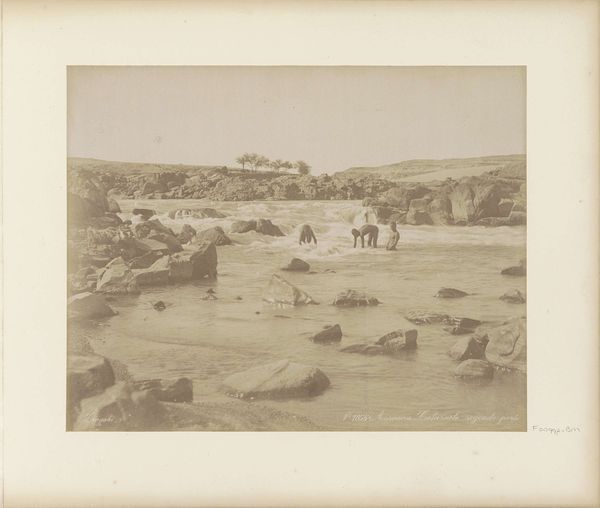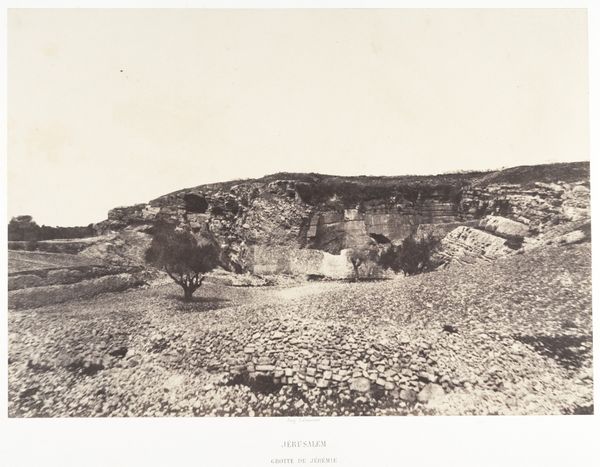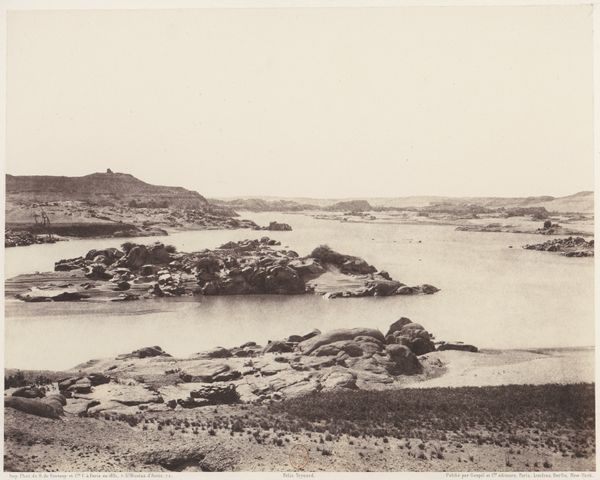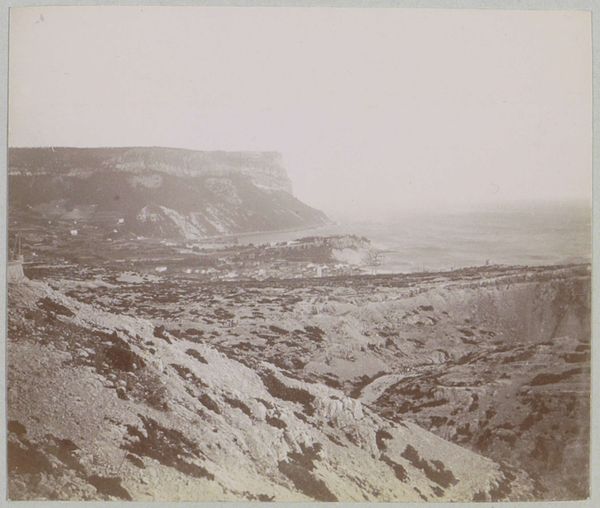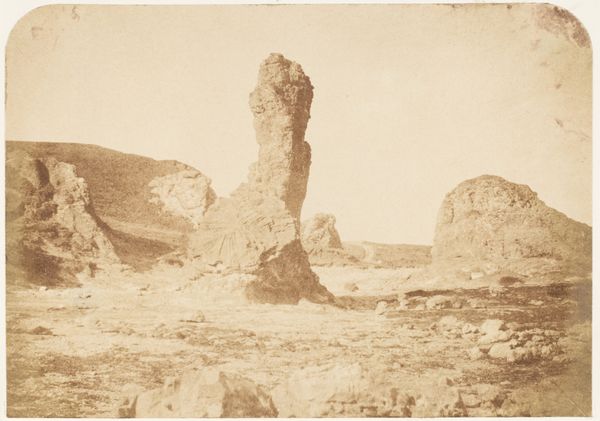
silver, print, photography, gelatin-silver-print
#
silver
# print
#
nature photography
#
landscape
#
ancient-egyptian-art
#
nature
#
photography
#
ancient-mediterranean
#
gelatin-silver-print
#
realism
Dimensions: 15.7 × 22.4 cm (image/paper); 30.3 × 43.3 cm (mount)
Copyright: Public Domain
Francis Frith made "The Nile from the Quarries of Joura" using a process called albumen silver printing. This involved coating paper with egg whites and silver nitrate, then exposing it to light through a negative. Frith was one of the first photographers to document Egypt on a large scale. What strikes me about this image is how it captures not only the natural landscape, but also the marks of human intervention. The quarries themselves, carved into the earth, represent an intense extraction of material. Stone was essential to pharaonic culture, and the labor involved was surely backbreaking. Frith’s photograph is more than just a pretty picture. It is a document of the industrial revolution that was about to take place. By examining Frith’s focus on industry, labor, and the transformation of the earth, we gain a deeper insight into the cultural and social forces that shaped this historical moment. This reminds us that even a photograph can invite consideration of materiality, making, and social context.
Comments
No comments
Be the first to comment and join the conversation on the ultimate creative platform.
